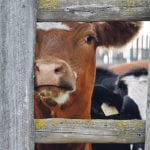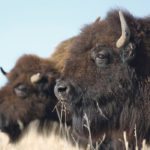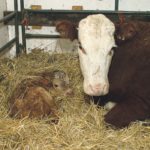Enzootic bovine leukosis is caused by the bovine leukemia virus. A lymphosarcoma, or cancer of the lymph system, is the end result in a small number of cows that are exposed to this virus. In blood tests, some dairy herds have a 10 to 20 percent incidence of cows that have been exposed and are […] Read more
Stories by Roy Lewis, DVM
Singing the praises of vaccination programs in livestock
The Canadian Veterinary Medical Association dedicates one week each fall to animal health week. This year, the theme is “vaccines save lives” and it is appropriate for all species. Vaccine use could also help reduce the amount of antimicrobial use, especially in preventing diseases caused by bacteria. I can cite numerous examples of vaccines preventing […] Read more
Pay attention to disease when moving cattle to pasture
It is amazing how variable the prevalence of a specific disease can be between geographic areas. We always think of the huge difference between warm climates and colder climates, but sometimes differences can be as close as a one-hour drive away. Knowledge of disease differences for specific areas becomes critical when cattle are shipped over […] Read more

Pre-turnout procedures can pay off in productivity
Whether it is grass yearlings or cow-calf pairs and breeding bulls, management procedures can and should be implemented before releasing cattle to pasture. The result is better health or increased performance this summer. We likely won’t get our hands on these cattle until fall so think into the future. Some have the luxury of herding […] Read more
Producers should embrace antimicrobial changes
If you know a producer who rarely hires a veterinarian, please pass this column along because they can most benefit from the following examples. Both producers and veterinarians have expressed apprehension about upcoming changes to antimicrobial regulations. The legislation has passed so it is best that we ready ourselves. The veterinarian will need to establish […] Read more
Countering myths in the cattle industry
Over the years in large animal practice, I have experienced many misconceptions that circulate in the cattle industry. These old wives’ tales can result in wasted profits, overuse of drugs, false accusations or misguided work. If you hear of some industry myths when you’re working in the field, please bring them to my attention and […] Read more

Clostridial disease is fatal in bison, so prevention is vital
I have run across several clostridial (blackleg) outbreaks in bison over the years. I will use the term blackleg to refer to most of the clostridial diseases bison get, even though only one specific one causes the true blackleg. It is a spore-producing bacterium and the spores remain infective in the soil for more than […] Read more
Monitoring suckle reflex helps supplement colostrum
A new test can make it easier for producers to assess which calves should receive supplemental colostrum when only a few minutes old. Dr. Elizabeth Homerosky, a veterinarian from the University of Calgary, compared various tests, procedures and observations used to help determine weak calves. It may involve weak calves at birth, calves that have […] Read more
Working with cows close to calving takes care
Producers encounter many different reasons to handle cows in late pregnancy. Some of these procedures are definitely needed, but one must always ask about the benefit gained versus the stress of running heavily pregnant cows through the chute. Vitamins A and D and in some cases selenium were previously given if deficiencies were determined during […] Read more

Newborn calf procedures provide long-term payoff
If producers can prevent or significantly reduce diseases in newborn calves, they can decrease mortality and improve overall herd production. When producers are pairing up or moving the newborn and its mother, they will often get a chance to look after some necessary management. For most operations, that involves newborn calves three days old or […] Read more



